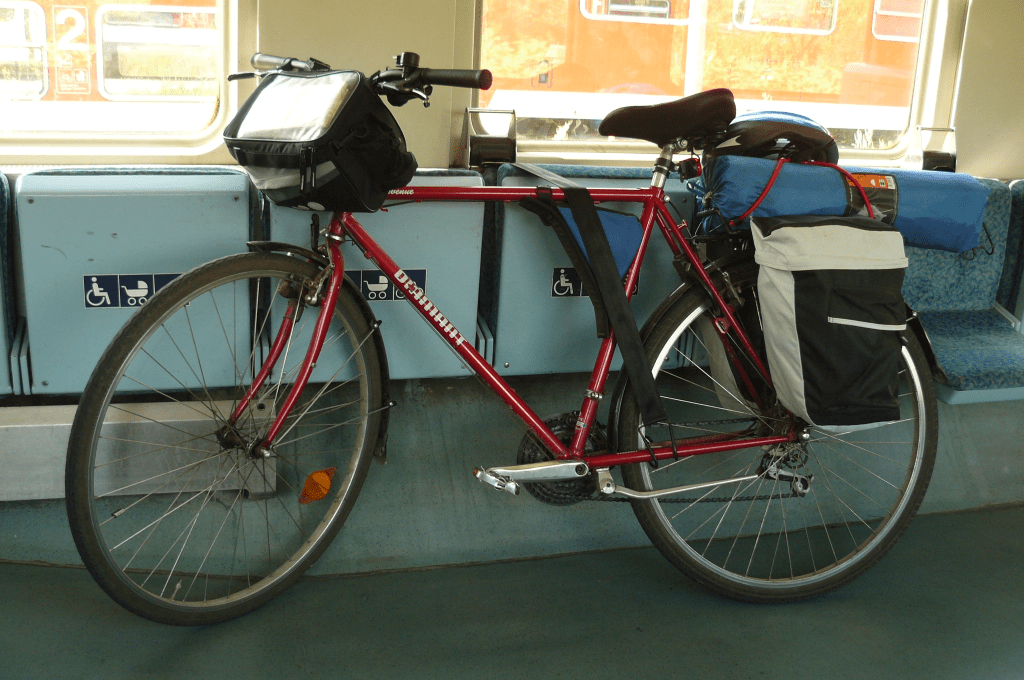Travelling with your bicycle by train can be a convenient and eco-friendly way to commute or explore new places. In the United Kingdom, most train companies are bike-friendly, but there are important details you should know to ensure a smooth journey with your non-folding bike.


Bike-Friendly Rail Travel
Trains and bicycles make a great combination, offering high-speed inter-urban travel alongside efficient short-distance commuting. National Rail recognizes this synergy and encourages the integrated use of bikes and trains, emphasizing their environmental benefits.
What Are the Rules?
The good news is that, in most cases, you can take your non-folding bike on British trains for free, with some caveats:
- There is usually a limit on the number of bikes allowed per train, typically ranging from two to six, and reservations may be required.
- Different train operators have their own rules regarding bike carriage, including restrictions on certain services, such as commuter trains during peak hours.
To navigate these varying regulations, it may be worthwhile to consider investing in a folding bike if your travel plans are flexible.


Bike Reservation and Space Availability
For trains that do not require bike reservations, you can simply board with your bike if there is available space. However, it’s essential to note that if all bike spaces are taken, the train guard may refuse you, which can be inconvenient and costly.
If your journey requires a bike reservation, make sure not to miss it. If circumstances beyond your control, like train delays or cancellations, lead to a missed reservation, railway staff will typically honor it on the next available train. However, if the mistake is yours, you might face difficulties.
Booking Your Bike Space
To secure your bike’s spot on the train, you have three booking options:
- In Person: Visit your nearest staffed railway station.
- Over the Phone: Contact the train company’s booking line.
- Online: Many train company websites, such as East Coast, allow you to reserve bike spaces online.
When at the platform, inquire with station staff about where to stand to minimize running around. On smaller trains, you can typically lift your bike on board and secure it using provided restraints. On intercity trains, you may need the guard’s assistance to access the guard’s van or cycle locker.
Bikes as Baggage


If you can disassemble your non-folding bike and pack it inside a bag that complies with size restrictions, it may be considered luggage. However, this option is impractical for daily commuting due to size limitations.
According to the National Conditions of Carriage, if your bagged bike exceeds 100cm in any dimension, the guard can refuse it. To enjoy the flexibility of travelling on any train without reservations, consider opting for a compact folding bike.
Considerations for Your Commute
For daily commuters, ensuring a reserved space for your bike is essential. It’s worth exploring alternatives like boarding in the first-class section if you have a short journey and being prepared to explain your situation to understanding train guards.
Checking out train companies that prioritise bike-friendly services, such as Southeastern with ample bike spaces, can also enhance your commuting experience.
Innovative Solutions for Bike-Rail Travel
Bike Rental at Destination Stations


One approach is to park your non-folding bike at your home station, board the train without it, and then have another bike waiting for you at your destination. This method requires having two bikes, with a cheaper, low-maintenance option left at your destination station. This way, you can quickly transition from the train to your workplace or final destination without worrying about bike storage or theft.
In larger cities like London, you can utilise bike rental schemes, such as Santander Cycles (formerly Barclays Hire Bike). For a small fee, you can rent a bike for 24 hours, making it a convenient choice for occasional use.
Alternatively, some commuters use schemes like Cyclescheme, which allows you to have two bikes: one for the home-to-station leg of your journey and another for the station-to-work leg.
PlusBike: A Digital Resource
For those seeking detailed information on cycle-rail journeys and facilities, PlusBike is a valuable digital resource. PlusBike is a one-stop shop for all things related to combining cycling and train travel, offering insights and assistance for a seamless experience.
Developed by the Rail Delivery Group (RDG), Network Rail, train operators, and government agencies, PlusBike provides essential information about:
- Cycle facilities available at various stations.
- Rules and regulations regarding bike carriage.
- Reservation details.
- Local cycle hire options.
You can access PlusBike through the National Rail mobile app and website. This digital resource aims to simplify your journey and improve your door-to-door experience.
Improving the Commuter Experience
According to PlusBike spokesperson Sarbjeet Dosanjh, “PlusBike allows us to provide helpful and easy-to-understand information, with a view to improving customer experience and door-to-door journeys.” He emphasizes that satisfaction among PlusBike users is high, with an 89% approval rate.
Commuters are not the only beneficiaries of such services; leisure users and those embarking on unfamiliar journeys can also benefit from the wealth of information available through PlusBike.
In conclusion, taking your non-folding bike on a train in the UK is certainly feasible, but it requires careful planning and awareness of the rules and regulations of the specific train operator you are using. Whether you choose to reserve bike spaces, explore alternative transport options, or rely on digital resources like PlusBike, the key is to be well-prepared to ensure a smooth and enjoyable bike-rail journey. Happy cycling!
